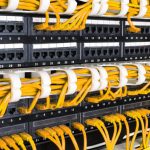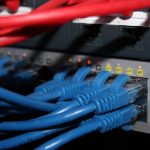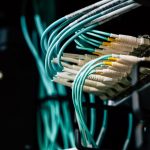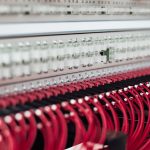Notice: Function Elementor\Controls_Manager::add_control_to_stack was called incorrectly. Cannot redeclare control with same name "eael_image_masking_upload_pro_message". Please see Debugging in WordPress for more information. (This message was added in version 1.0.0.) in /home/teslau30/public_html/toucannetworks.com/wp-includes/functions.php on line 6121
Notice: Function Elementor\Controls_Manager::add_control_to_stack was called incorrectly. Cannot redeclare control with same name "eael_image_masking_upload_pro_message". Please see Debugging in WordPress for more information. (This message was added in version 1.0.0.) in /home/teslau30/public_html/toucannetworks.com/wp-includes/functions.php on line 6121
Notice: Function Elementor\Controls_Manager::add_control_to_stack was called incorrectly. Cannot redeclare control with same name "eael_image_masking_upload_pro_message". Please see Debugging in WordPress for more information. (This message was added in version 1.0.0.) in /home/teslau30/public_html/toucannetworks.com/wp-includes/functions.php on line 6121
Structured Cabling
Notice: Function Elementor\Controls_Manager::add_control_to_stack was called incorrectly. Cannot redeclare control with same name "eael_image_masking_upload_pro_message". Please see Debugging in WordPress for more information. (This message was added in version 1.0.0.) in /home/teslau30/public_html/toucannetworks.com/wp-includes/functions.php on line 6121
Cabling Solutions

STRUCTURED CABLING SOLUTIONS
Looking for structured cabling solutions? Here are all the facts you need to know.

Patch Panels
A patch panel connects cables. They’re also called patch bays and are attached to network racks. Patch panels use cords to connect to a switch.
You can think of the patch panel as a connection hub. It bundles up all the connections to another network. Often, this is how a LAN connects to the internet. You can usually find patch panels in communication closets and data centers at a business.

Switches
A switch, in cabling, is a component of the system that receives, processes and sends data. The switch connects your patch panels so you can connect devices to a network and share data and access the internet

Health
A trunk is a cable that connects to patch panels. You can think of trunks as a way of consolidating the number of wires running from patch panel to patch panel. They’re essentially a grouping of wires that are bound into one big cable to keep everything neat and organized.

Distributed Antenna Systems
Structured cabling solutions can support distributed antenna systems for mass notification, Wi-Fi and wireless coverage. If you need or want to offer free Wi-Fi at your business, you can use a distributed antenna system to do it.

Network Cabling
Structured cabling has a variety of uses, making it versatile and able to meet your business’s needs. Unlike point-to-point cabling, structured cabling solutions can grow with your business and it’s easy to add more workstations or hardware as you need.

Security
Your business’s security is important. Structured cabling solutions can connect all of your security cameras and surveillance equipment and control sensors across your building.
What Is Structured Cabling?
Technology is constantly evolving and changing, sometimes faster than you could ever guess. These new tools can make businesses more productive, secure and agile. However, these tools need the right network to support them.
Structured cabling systems are a kind of network cabling solution that organizes your infrastructure. The beauty of structured cabling is that it helps to future-proof your business by accommodating any new hardware you add while supporting the increasing amount of data businesses use every day. It makes things much easier to manage as your business grows!
To help you understand structured cabling systems, we’re taking a deep dive into what they are, how they work and how you can use structured cabling systems at your business to maximize your ROI.


WHAT MAKES UP STRUCTURED CABLING?
“Structured cabling” may lead you to believe that the system is only made of cables in your data center, but that’s not quite the case. A structured cabling system actually runs throughout a building or across a campus, with different points and dedicated areas
Besides cables, structured cabling solutions can include racks, network cabinets, hardware ports and more. All of these smaller pieces work together as part of the overall system.
The standardized elements that make up structured cabling are called “subsystems.” These subsystems are typically located across a building, so it’s important to know where they’ll be in your business location.
There are six different kinds of subsystems that go into structured cabling.
Fiber Optic Cable
Fiber optic cables are a lot like electric cables, except they’re made out of optical fibers to carry signals and images. These optical fibers are made out of silica or plastic and coated with more layers of plastic inside the cable itself.
Different kinds of fiber optic cables may be used for long-distance telecommunication or high-speed connections between buildings on campus.
Contact Toucan networks
For all structured cabling requirements
Benefits You Can Expect
Businesses are sending more and more data through their networks, and it’ll only increase as more tools and technology enter the workplace. Your cabling infrastructure needs to support it. Sticking with point-to-point cabling means you run the risk of longer downtime every time an issue arrives. If you’re outgrowing your old network cabling, or if you just want to maximize your business’s potential, it’s time to bring structured cabling solutions into play!
Cost-Effectiveness
Flexibility
Reliability
Structured cabling systems are a great way to mitigate the costs of obsolescence. As new technologies emerge, a simple point-to-point cabling system won’t work. As you add more and more to your office’s technological toolkit, you need a cabling system that supports it.
With a point-to-point cabling system, it’s not guaranteed your network will be able to support your future needs. It’s also a lot harder for an IT specialist to identify and fix a problem with the network should one ever arise (though we certainly hope it never does).
Structured cabling solutions also help you save on labor and service costs. If you ever upgrade your equipment, you won’t have to re-cable your entire system and spend extra time and money on labor.
Structured cabling maximizes your network’s potential without risking downtime due to human error. You’ll have less maintenance to deal with and more ROI.
You can easily move, add or change the hardware at your business with a structured cabling system. Everything runs to the Main Distribution Center or MDA, so all of your cables are consolidated in one place. This flexibility is key if you ever want to upgrade your systems in the future.
A structured cabling system can accommodate new cabinets, workstations or wireless access points. Unlike point-to-point cabling, there’s no sorting through a tangled mess of cables and wires. And if you ever need to move offices or locations, structured cabling systems are easy to dismantle and reassemble.
Installing structured cabling will improve the speed, performance and reliability of your business’s network. A structured cabling system can support your business’s data, video and media needs, so you can get the most out of your network if you need to expand.
Structured cabling will enable your employees to enjoy a high-speed network that supports voice, video and other kinds of media. This is especially helpful in large-scale business operations, like in manufacturing, since structured cabling will also maximize uptime. At the same time, this organized and standardized approach makes it much easier for tech support to identify and troubleshoot issues within the network.
In the past, point-to-point cabling had no real rules or best practices to guide installing the infrastructure. So, as a business’s needs expanded and added more servers to their data center, cabling only became messier and harder to maintain.
Structured cabling is governed by strict standards to avoid this problem. These standards are in place to guide all installations for structured cabling solutions. When you install a structured cabling system, the data cabling company should be following the official standards for the cables, hardware and everything in between.
Standards
tructured cabling systems are installed in compliance with TIA/EIA-568. These standards are issued by the American Telecommunications Industry Association and the Electronic Industries Alliance.
 The standards for structured cabling are comprehensive and cover all aspects of the installation. You should always have an expert install your structured cabling system since they’ll know exactly how your cabling system needs to be laid out.
The standards for structured cabling are comprehensive and cover all aspects of the installation. You should always have an expert install your structured cabling system since they’ll know exactly how your cabling system needs to be laid out.
Other standards for cabling include:
- ISO/IEC 11801: Standards for general-purpose communications in commercial buildings. This includes telephony, data communications standards, building control systems and factory automation. It also includes copper cabling and optical fibre cabling.
- EN 50173: The European standard for cabling. These standards provide guidance for a generic cabling system’s backbone cabling.
The TIA/EIA-568 defines and maintains the standards for structured cabling in buildings and across campuses, and are updated every few years. All of these standards ensure any installed structured cabling system is up to par according to the best practices in the industry. With these standards in place and proper installation, your structured cabling solutions will be able to accommodate new technologies for the workplace.
How Data Cabling Experts Can Help You
As with many home improvement projects, some things are best done by seasoned professionals. Structured cabling installation involves working with electrical wiring and cabling which can be complex, and you may also need to remove any abandoned cables as required by the National Electric Code—something a professional can easily assist with.
 A data cabling company will have the expertise to install a structured cabling system for your business and provide you with guidance on how it works. They’ll be able to survey your facility, assess your current network and consult with you on your new structured cabling system.
A data cabling company will have the expertise to install a structured cabling system for your business and provide you with guidance on how it works. They’ll be able to survey your facility, assess your current network and consult with you on your new structured cabling system.
Installing a structured cabling system will mean running cable throughout your business location. You need to know:
- How many rooms will be wired
- How many ports will be required
- The amount of devices connecting to the network
- The location of the electrical wiring in the building
Oftentimes, there are also local city ordinances and codes that have to be taken into account and followed. You also need to account for electromagnetic interference when you lay out your cabling.
Since there are so many factors to consider, and especially with electricity at play, installing and implementing structured cabling solutions at your business should be done by a trained professional. Mistakes during the installation process can have serious consequences, like a slow connection, errors and hours wasted in getting everything up and running again.
Oftentimes, business owners may cut corners or skip steps in the installation process, which can result in bigger problems down the line. Laying a cable too close to an electric line, for instance, can greatly affect your network’s connectivity.
You want the best for your business, so call in the experts for structured cabling solutions. With all the planning that goes into laying out a structured cabling system, a team of seasoned professionals can install your equipment in compliance with the proper standards.
The Six SubSystems:
Installing structured cabling solutions involves laying out and designing the system itself, which can be tricky in and of itself. This design process takes factors like heat, cooling and airflow into account and needs to be methodical for best results. A data cabling company will work with you to design a system that fits your current and future needs.
All six of these subsystems work together to support your business. Your cables and wiring will be accessible whether you need to fix something or want to upgrade in the future.
Entrance Facilities
The physical point where the premises’s wiring begins and the telephone company’s wiring ends
Equipment Rooms
Rooms inside the building or campus that house equipment or consolidation points
Backbone Cabling
Inter- and intra-building cable connections
Horizontal Cabling
Wiring that connects telecommunications rooms to outlets or work areas in the floor
Telecommunications Room
Connects the backbone cabling and horizontal cabling
Work Area Components
Connections between the end-user’s equipment and the outlets of the horizontal cabling system